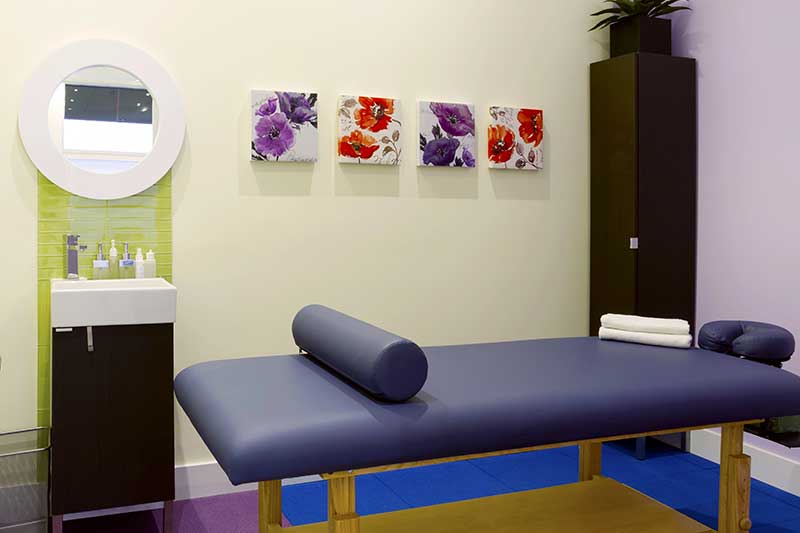Dreaming of starting your own massage therapy business but not sure where to begin? You’re in the right place. Today, massage therapy is more than just a luxury; it’s a recognized healthcare practice that helps people manage pain, reduce stress, and improve overall wellness. If you’re a massage therapy student with aspirations to transform your passion into a thriving business, this guide is your roadmap to success.
How to Start a Massage Therapy Business in 11 Steps
We’ll walk you through each step, from obtaining certifications to building your brand and attracting clients. By the end of this post, you’ll have actionable insights to kickstart your massage therapy business.
1. Understanding the Importance of Certifications
Why Certifications Matter
Becoming a certified massage therapist is the first crucial step. Certifications not only validate your skills but also build trust with potential clients. They show that you have met industry standards and are committed to providing high-quality service.
Types of Certifications
There are various certifications you can pursue based on your specialization. Some popular ones include the National Certification Board for Therapeutic Massage and Bodywork (NCBTMB) and the International Spa Association (ISPA) certification. Each has its own set of requirements and benefits.
How to Obtain Certifications
To earn these certifications, you typically must complete a certain number of training hours and pass a standardized exam. Most programs offer both in-person and online courses, allowing you flexibility. It’s essential to research and choose the program that best fits your career goals.
2. Crafting a Business Plan
The Importance of a Business Plan
A well-thought-out business plan serves as your blueprint for success. It outlines your goals, strategies, and the steps you need to take to achieve them. A solid plan can also attract investors and secure loans.
Key Elements of a Business Plan
Your business plan should cover several critical areas, including market analysis, target audience, services offered, pricing strategy, and marketing plan. Each section should provide detailed information to guide your business decisions.
Setting Realistic Goals
Set both short-term and long-term goals for your business. Short-term goals might include acquiring your first 10 clients, while long-term objectives could include opening a second location. Ensure your goals are specific, measurable, achievable, relevant, and time-bound (SMART).
3. Legal Considerations and Requirements
Licensing and Permits
Before opening your doors, you must obtain the necessary licenses and permits. These vary depending on your location but generally include a business license and a massage therapy license. Check your local regulations to ensure compliance.
Insurance Needs
Insurance is another critical consideration. Professional liability insurance protects you against claims of malpractice or negligence. Additionally, consider general liability insurance to cover accidents or injuries on your premises.
Understanding Tax Obligations
Being aware of your tax responsibilities is essential. Depending on your business structure, you may need to pay federal, state, and local taxes. Hiring a tax professional can help you navigate this complex area and avoid potential pitfalls.
4. Finding the Ideal Location
Importance of Location
The location of your massage therapy business can significantly impact its success. A convenient, accessible location can attract more clients and increase your visibility.
Factors to Consider
When choosing a location, consider factors like foot traffic, parking availability, and proximity to complementary businesses like gyms or wellness centers. Also, evaluate the rent and utility costs to ensure they fit your budget.
Leasing vs. Buying
Decide whether leasing or buying a property makes more sense for your business. Leasing offers flexibility and lower upfront costs while buying provides long-term stability and potential investment benefits.
5. Designing Your Space
Creating a Welcoming Atmosphere
Your massage therapy space should be a sanctuary for clients. Design it with comfort and relaxation in mind. Choose soothing colors, comfortable furniture, and soft lighting to create a calming environment.
Essential Equipment and Supplies
Invest in high-quality massage tables, linens, and oils. Other essentials include chairs, storage units, and cleaning supplies. Clients will appreciate your attention to detail and the quality of your equipment.
Incorporating Technology
Technology can enhance your business operations. Consider scheduling software to manage appointments and client records, and invest in a professional website to promote your services online.
6. Marketing Your Business
Building an Online Presence
In today’s digital age, having a strong online presence is crucial. Create a professional website with information about your services, pricing, and contact details. Use SEO strategies to increase your website’s visibility on search engines.
Utilizing Social Media
Social media platforms like Facebook, Instagram, and LinkedIn are powerful tools for reaching potential clients. To attract and retain followers, share engaging content, such as client testimonials, before-and-after photos, and special promotions.
Networking and Partnerships
Building relationships within your community can also boost your business—partner with local gyms, spas, or wellness centers to cross-promote services. Attend industry events and join professional organizations to expand your network.
7. Setting Your Pricing Strategy
Competitive Analysis
Conduct a competitive analysis to understand what other massage therapists in your area charge. This will help you set competitive yet profitable prices for your services.
Value-Based Pricing
Consider adopting a value-based pricing strategy. This means setting prices based on the perceived value of your services rather than just the cost. Highlight the unique benefits you offer to justify your rates.
Offering Packages and Discounts
Offer packages and discounts to attract more clients. For example, offer a discount for first-time clients or create a loyalty program for repeat customers. This encourages clients to book multiple sessions and increases revenue.
8. Providing Exceptional Customer Service
Importance of First Impressions
First impressions are critical in the service industry. Greet clients warmly, offer refreshments, and ensure your space is clean and inviting. A positive first impression can lead to repeat business and referrals.
Personalizing the Experience
Personalize each client’s experience by remembering their preferences and addressing their needs. Use client intake forms to gather information about their health history and massage preferences.
Handling Feedback
Feedback is a valuable tool for improving your services. Encourage clients to share their thoughts and suggestions. Address any complaints promptly and professionally to maintain client satisfaction.
9. Maintaining Professional Development
Continuing Education
The massage therapy field is constantly evolving. Attend workshops, seminars, and advanced training courses to stay updated on the latest techniques and trends. Continuing education enhances your skills and shows clients your commitment to excellence.
Joining Professional Organizations
Join professional organizations like the American Massage Therapy Association (AMTA) or the Associated Bodywork and Massage Professionals (ABMP). Membership provides access to resources, networking opportunities, and industry updates.
Seeking Mentorship
Find a mentor who can offer guidance and support as you build your business. A mentor can provide invaluable insights, help you avoid common pitfalls, and inspire you to reach your full potential.
10. Building Client Relationships
Importance of Trust
Trust is the foundation of any successful therapeutic relationship. To build trust with your clients, be transparent about your qualifications, services, and pricing. Honor your commitments and maintain confidentiality.
Consistent Communication
Communicate regularly with your clients through newsletters, emails, or phone calls. Inform them about new services, promotions, and industry news. Consistent communication helps build long-term relationships.
Providing Added Value
Go the extra mile to provide added value to your clients. Offer complimentary services, such as aromatherapy or hot stone treatments, to enhance their experience. Small gestures can make a big difference in client satisfaction.
11. Promoting Wellness in Your Community
Hosting Workshops
Host workshops or seminars to educate your community about massage therapy’s benefits. Topics could include stress management, self-care techniques, or the importance of regular massages.
Participating in Community Events
Promote your business by participating in local events, such as health fairs or charity runs. Offer free chair massages or distribute promotional materials to attract new clients.
Supporting Local Causes
Support local causes by donating your services or sponsoring events. This not only benefits your community but also enhances your business’s reputation and visibility.





